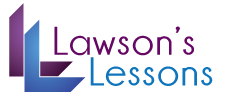Using Imagery in Speech
Imagery
OBJECTIVE: After a demonstration on the topic students will be able to write two short (3-5 sentences) paragraphs using at least three examples of verbal imagery per paragraph.
MATERIALS: Computer and Youtube clip at http://www.youtube.com/watch?v=Tzx6d5h-5Mg.
Activities:
1. Have each student take out a piece of paper and a pencil. Tell them that you are going to show them a clip from the Lord of the Rings. Ask them to write down anything in the speech that catches their attention.
2. After the video ask students for what they wrote down. If they give an example of imagery ask them what picture those words create in their minds.
3. Say the following: “Using language to create pictures is imagery. It gives the listener something to se, smell, taste, or feel. It works best with things that can be experienced with the senses. Using imagery with love is difficult. It’s easy with a chilly fall night. See what comes to mind when I mention a small mountain town on a snowy December night or the thrill of a roller coaster breaking over its first drop. Notice what you felt when you saw those – maybe calm or excited. That’s the purpose of imagery. It gives emotion to the listener. And what do we know about emotion and speech? Let’s get a few examples of imagery.” After each example ask why that works for imagery. Then pick another student and ask how else they could use imagery to create that picture.
4. Instruct the students that they will be writing two paragraphs describing their favorite vacation. They are to use imagery three times in each paragraph for a total of six times.
Results: Students will understand what imagery is, how it works, and be able to incorporate imagery into their speeches.
Scott Ritterbush
September 2, 2009
Words & Picture in Our Heads
Imagery
Objective: The students use the concepts regarding word choices to create effective sentences.
Material:
• The students must bring their textbook. (Textbook: Public Speaking written by Michael Osborn & Suzanne Osborn)
• The teacher prepares a picture.
Steps:
1. Introduction
The teacher talks about imagery.
2. Activity-1: Learning Skills for Word Choices
A. Each student works with his/her partner in this activity.
B. The teacher assigns the following terms to each pair: clarity, color, concreteness, correctness, conciseness, cultural sensitivity, figurative language, metaphor, simile, personification, enduring metaphors, culturetypes, ideographs, antithesis, inversion, and parallel construction.
C. Each pair needs to find the definition of the term and example of the term from the textbook and personal experiences. (The teacher walks around the classroom and helps the students.)
D. Each pair presents its definition and example in front of the class. The teacher gives additional information if the students’ information is not enough.
3. Activity-2:
A. Each student work with the same partner.
B. The teacher shows the pictures.
C. Each pair creates a description of the picture by using the concepts presented in the first activity.
D. Some pairs present their descriptions.
E. The teacher collects descriptions from all pairs.
4. End of Class
The teacher summarizes the class and collects the worksheets.
Results: The students learn about the concepts and use them to create effective sentences.
Emi Nishimoto
Picture This!
TOPIC: Imagery
OBJECTIVE: The student will learn how to effectively describe an object using creative words and phrases.
MATERIALS: Marker or chalk board; container filled with slips of paper with object names on them.
STEPS:
1: Explain to the students how descriptive words as well as metaphors and similes can make an object seem more interesting.
2. Give an example by showing or drawing a picture of an old house. Then say something like: The weathered, wind battered house reminded me of a lonely old woman crying on the hillside.
3. Divide the class into groups of two and designate who will draw and who will describe. Have each group draw a slip of paper.
4. Have the group go to the marker board and have the “artist” begin drawing their object.
5. The describer will then use creative adjectives and phrases to describe the object that is being drawn on the board.
RESULT: After the students have described their objects, assign a worksheet with several objects on it. Have each student describe these objects for homework to hand in the next day.
